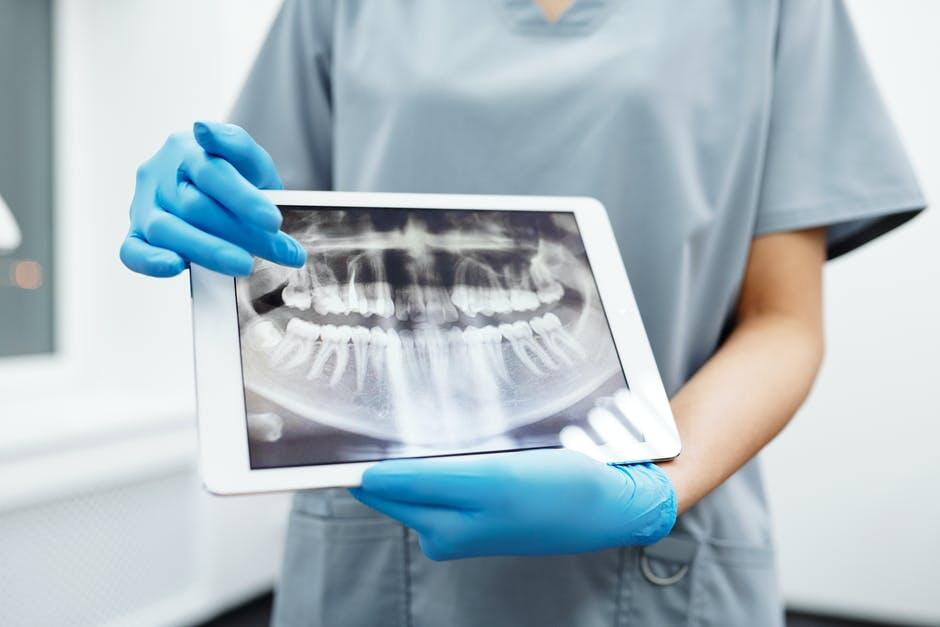Dental care has changed a lot over the years. One of the biggest changes is how technology has improved dental implants. In the past, getting a dental implant was a long and uncomfortable process. Today, thanks to modern tools and machines, the procedure is faster, safer, and more comfortable than ever.
Dental implants are used to replace missing teeth. They look, feel, and work like natural teeth. More people are choosing implants to restore their smile. But what makes today’s implants so successful? The answer lies in technology.
This article will explore the role of technology in modern dental implants. You will learn how digital tools help dental implant specialists plan and place implants with great precision.
What Is a Dental Implant?
Before diving into technology, let’s first understand what a dental implant is. A dental implant is a small titanium post that is placed into your jawbone. It acts like the root of a natural tooth. Once it is placed, a crown (artificial tooth) is attached to it. The result looks just like a real tooth.
Dental implants are strong and can last many years. They also help keep your jawbone healthy by preventing bone loss.
The Importance of a Dental Implant Specialist
Not every dentist places dental implants. A dental implant specialist is a dentist with advanced training in placing and restoring implants. They know how to use the latest tools and machines. This helps improve the chances of success and reduces the risk of problems.
Seeing a specialist also means your treatment will be more comfortable and personalized. Technology helps them understand your mouth in detail, so they can choose the best method just for you.
3D Imaging and Scanning
One of the biggest improvements in dental implants is 3D imaging. In the past, dentists used regular X-rays to look at your teeth and jaw. But these images were flat and sometimes hard to read.
Today, many dental offices use a CBCT (Cone Beam Computed Tomography) scanner. This machine takes a 3D picture of your mouth. It shows your bones, nerves, and teeth in great detail.
This 3D scan helps the dentist:
- See the exact shape of your jaw
- Avoid important nerves
- Measure bone density
- Plan where to place the implant
Using 3D imaging, the specialist can place the implant with better accuracy. This means fewer surprises during surgery and faster healing.
Digital Impressions Replace Messy Molds
If you’ve ever had a dental mold taken, you know how uncomfortable it can be. The dentist puts a tray filled with goo in your mouth, and you must wait while it hardens.
Technology has now replaced these messy molds with digital impressions. A small camera is used to scan your mouth. It takes thousands of pictures in seconds and creates a 3D model on the screen.
Benefits of digital impressions:
- No bad taste or gagging
- Faster than traditional molds
- More accurate
- Easier to share with the dental lab
With a digital impression, the dental lab can make a crown that fits perfectly on your implant.
Computer-Guided Implant Surgery
Another modern tool is computer-guided surgery. This technology uses the 3D scan and digital impressions to create a custom surgical plan. The software helps the specialist plan the exact angle and depth of the implant.
In some cases, the dentist uses a surgical guide made by a 3D printer. This guide fits over your teeth and has a small hole that shows where to place the implant. It acts like a GPS for your mouth.
Here are some benefits of guided surgery:
- Shorter surgery time
- More precise placement
- Lower risk of complications
- Faster recovery
With the help of computers, implant placement is more predictable and less stressful for patients.
3D Printing in Dental Implants
3D printing is changing the dental world. This technology builds objects layer by layer using materials like resin or metal. In dental implant care, 3D printers are used to create:
- Surgical guides
- Temporary crowns
- Models of your teeth
This process is fast and accurate. It also helps reduce waiting time for patients. In the past, making these items took days or weeks. Now, some can be made in just a few hours.
3D printing also allows for better customization. Your implant and crown can be designed just for you, which makes them look and feel more natural.
CAD/CAM Technology
CAD/CAM stands for Computer-Aided Design and Computer-Aided Manufacturing. It is used to create custom dental restorations like crowns and bridges. In dental implants, CAD/CAM helps design and produce the final crown that sits on the implant.
The process begins with a digital scan of your mouth, which is used to design the crown using special software. A milling machine then carves the crown from a solid block of ceramic. After polishing, the crown is attached to the implant.
This method is fast, accurate, and often more comfortable than traditional impressions. Many dental offices even offer same-day crowns using CAD/CAM technology.
Laser Technology for Gum Care
Lasers are now being used to help with gum treatment during the dental implant process. Lasers can be used to:
- Shape the gums for a better fit around the implant
- Remove infected tissue
- Help in healing after surgery
Laser treatments are gentle and often don’t require stitches. They also reduce bleeding and swelling. This helps patients feel better faster.
Artificial Intelligence in Dental Planning
Artificial intelligence (AI) is also becoming part of dental care. AI software can analyze scans, X-rays, and dental records. It helps the specialist spot problems and plan treatment more easily.
For dental implants, AI tools can:
- Suggest the best implant size and type
- Warn about possible risks
- Help with long-term follow-up care
Though still new, AI is helping dentists make better decisions and improve results for patients.
Digital Records and Patient Communication
Keeping good records is important in dental care. Today, dental offices use digital record systems. These systems store:
- X-rays and scans
- Photos
- Notes from each visit
- Treatment plans
This makes it easy for the dental team to track your progress. It also helps them spot problems early and update their care plan as needed.
Many offices also offer online portals. These let you:
- View your dental records
- Ask questions
- Schedule appointments
- Get reminders
Technology is making it easier for patients and dentists to work together.
Benefits of Technology in Dental Implants
Technology has made dental implants safer, faster, and more comfortable than ever before. Patients today enjoy a wide range of benefits that were not possible just a few years ago. Let’s explore the most important ways technology improves the dental implant experience.
Increased Accuracy and Precision
One of the biggest advantages of modern dental tools is the accuracy they provide. Using 3D imaging and computer software, dental implant specialists can now plan your entire procedure before it even begins. This level of precision lowers the chances of problems and helps your implant last longer.
Faster Treatment Times
With older methods, getting dental implants could take many months. Now, thanks to digital planning and tools like CAD/CAM machines, the process is much quicker. Faster treatment times mean less waiting and quicker results.
Less Pain and Discomfort
Technology has also made implant procedures more gentle. Using guided surgery, dentists can place implants with less cutting and fewer stitches. Some dentists also use lasers, which reduce bleeding and help tissues heal more quickly.
Better Aesthetic Results
A natural-looking smile is very important. Thanks to digital tools, your dentist can now match the color, shape, and size of your new tooth to your existing teeth. With tools like:
- Digital Smile Design
- Intraoral scanners
- CAD/CAM technology
Your crown will blend in beautifully with the rest of your smile. You’ll feel more confident every time you look in the mirror.
Improved Communication and Planning
Digital technology makes it easier for your dental team to plan and communicate with each other. Your X-rays, scans, and records can be shared instantly between your dentist, dental lab, and even your insurance company. This leads to:
- Fewer errors or delays
- Smoother coordination between all parties
- More time spent focusing on your care
Some dentists even let you see a preview of your new smile before starting, so you know what to expect.
Safer Procedures
Dental implant technology is not just faster- it’s also safer. CBCT scans show important details like nerves, sinuses, and bone density, helping your dentist avoid problems during surgery.
Guided surgery tools also:
- Reduce the risk of hitting nerves or blood vessels
- Help dentists work more confidently
- Ensure consistent and reliable outcomes
For patients who need more complex care, such as bone grafting or multiple implants, this extra safety is especially valuable.
A Bright Future for Smiles
Technology is changing the way dental implants are done. With better tools, dental implant specialists can offer safer, faster, and more natural-looking results. From 3D scans to computer-guided surgery, each step is now more precise and patient-friendly.
If you are thinking about replacing a missing tooth, now is a great time to talk to a dental implant specialist. They can show you how today’s technology can restore your smile in ways that were not possible in the past.







